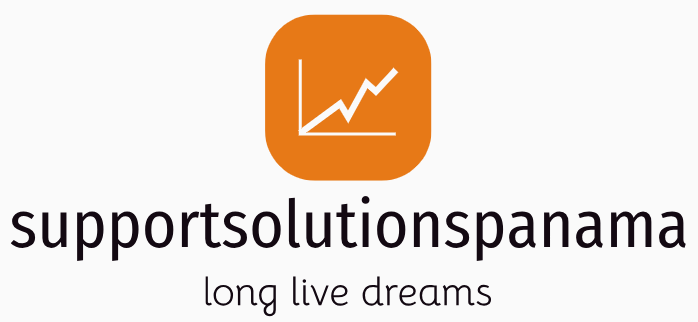Streamlining Print The Modern Enterprise Approach

Understanding the Modern Printing Landscape
The way businesses approach printing has drastically changed. Gone are the days of centralized print rooms solely managed by dedicated staff. Modern enterprises operate in dynamic environments, with employees needing access to printing capabilities from various locations – offices, remote workspaces, even client sites. This decentralized approach necessitates a smarter, more streamlined printing strategy that prioritizes efficiency, security, and cost-effectiveness.
Assessing Your Current Print Environment
Before implementing any changes, a thorough audit of your existing print infrastructure is crucial. This involves identifying all printers, their locations, usage patterns, and associated costs. Analyzing print volumes, types of documents printed, and the frequency of printing helps pinpoint areas for improvement. Consider factors like printer types (laser, inkjet, multi-function devices), toner/ink consumption, and the amount of paper wasted. This assessment provides a baseline to measure future improvements against.
Implementing a Secure Print Management System
Security is paramount in today’s connected world. A robust print management system (PMS) offers a layer of protection by controlling access to printers, limiting unauthorized printing, and preventing sensitive documents from falling into the wrong hands. Features like authentication (using passwords, cards, or biometrics), print release functions (where documents only print after the user authenticates at the printer), and secure print queues significantly enhance data protection. This also allows for better tracking of print jobs and costs associated with individual users or departments.
Optimizing Print Processes for Efficiency
Streamlining involves more than just securing your printing. It also requires optimizing workflows to minimize wasted time and resources. This could involve implementing a pull printing system (users release prints from a central server, reducing wasted prints), encouraging the use of digital documents whenever possible, and optimizing printer settings to ensure efficient printing speeds and optimal print quality. Training employees on best practices, such as double-sided printing and using print preview to avoid accidental prints, also contributes to a more efficient process.
Embracing Mobile and Cloud Printing Solutions
The modern workforce is increasingly mobile. Integrating mobile and cloud printing solutions allows employees to print from various devices (smartphones, tablets, laptops) regardless of their location. Cloud printing solutions can simplify printer management, particularly for geographically dispersed teams, and provide centralized control and monitoring of the entire print environment. This flexibility enhances productivity and empowers employees to work effectively from anywhere.
Monitoring and Analyzing Print Data for Continuous Improvement
Implementing a PMS often comes with robust reporting and analytics capabilities. Leveraging these tools allows you to monitor print usage, identify trends, and track costs over time. This data-driven approach enables you to make informed decisions about printer placement, resource allocation, and further process improvements. Regularly reviewing this data helps you identify areas where further optimization is needed, ensuring your print strategy remains effective and efficient.
Choosing the Right Print Hardware and Software
The selection of appropriate print hardware and software is fundamental to a successful streamlined printing strategy. This involves considering factors such as print volume, document types, security requirements, and budget constraints. Investing in multi-function printers (MFPs) can consolidate multiple functions (printing, scanning, copying, faxing) into a single device, reducing the overall hardware footprint and simplifying management. Choosing software that integrates seamlessly with your existing IT infrastructure is also crucial for a smooth implementation and efficient operation.
Cost Reduction Strategies
A well-planned print management strategy can significantly reduce printing costs. By tracking print jobs, identifying wasteful practices, and implementing cost-saving measures (like reducing paper usage and utilizing more economical printing settings), enterprises can see considerable savings. Negotiating favorable contracts with print vendors and opting for high-yield toner/ink cartridges can also help lower overall costs. The ability to accurately monitor and control printing provides valuable insights into where cost-cutting measures can be implemented most effectively.
Cultivating a Print-Conscious Culture
Finally, fostering a company culture that promotes responsible printing is essential for long-term success. This involves educating employees about the environmental and economic impact of excessive printing and encouraging the adoption of best practices. Promoting the use of digital alternatives, such as email and cloud storage, helps reduce paper consumption and improve efficiency. A collaborative and informed workforce is crucial for the sustained effectiveness of any print streamlining initiative. Read more about enterprise print management.




![Discover the Future of [Product Category] Discover the Future of [Product Category]](https://images.unsplash.com/photo-1700104494865-200e961d942c?fm=jpg&q=60&w=3000&ixlib=rb-4.1.0&ixid=M3wxMjA3fDB8MHxzZWFyY2h8OXx8cHJvZHVjdCUyMGxhdW5jaCUyMG1hcmtldGluZyUyMGNhbXBhaWdufGVufDB8MHwwfHx8Mg%3D%3D)




